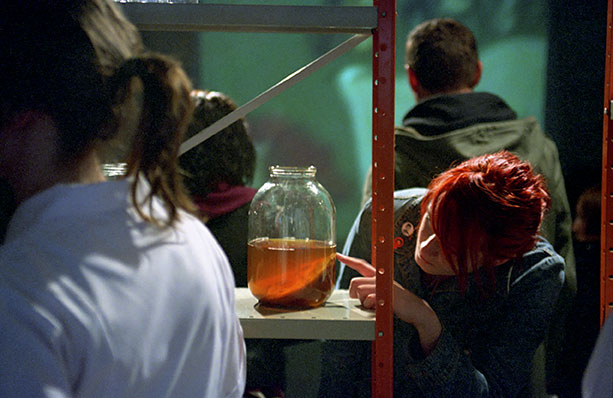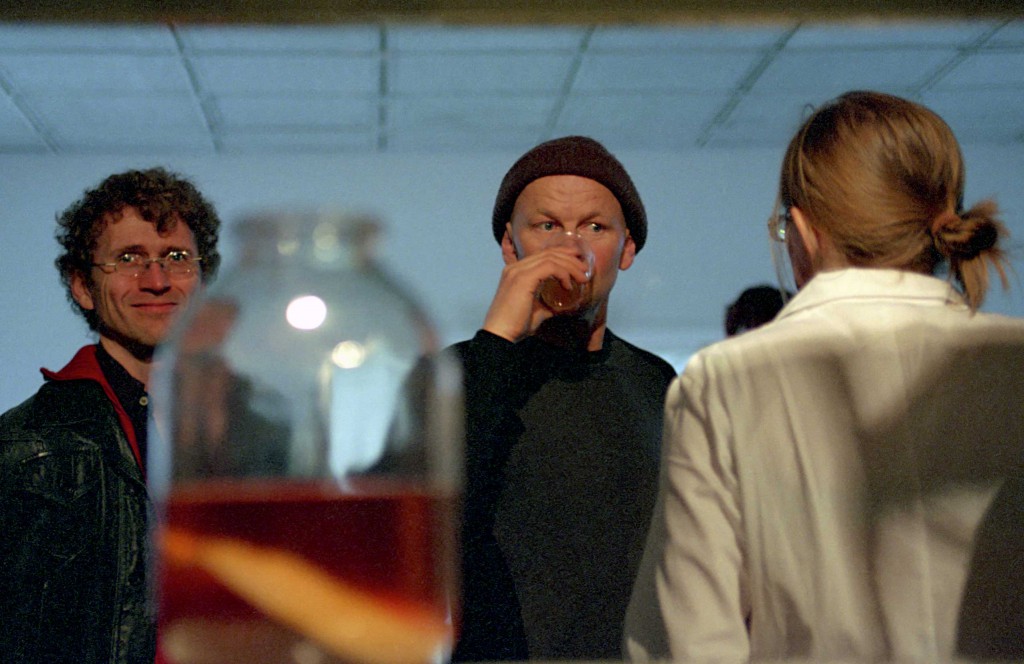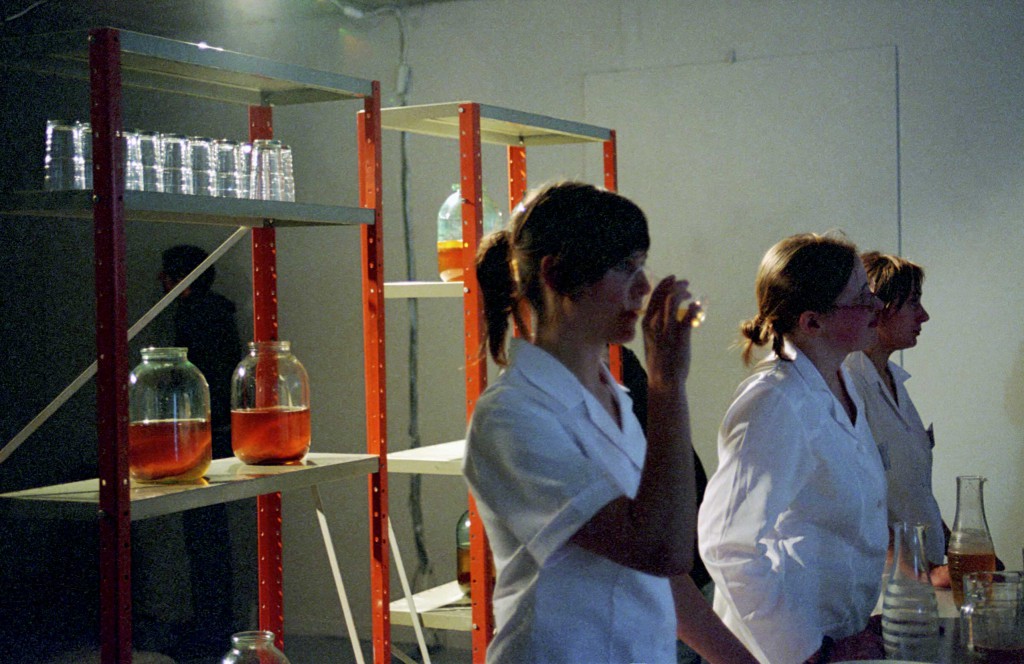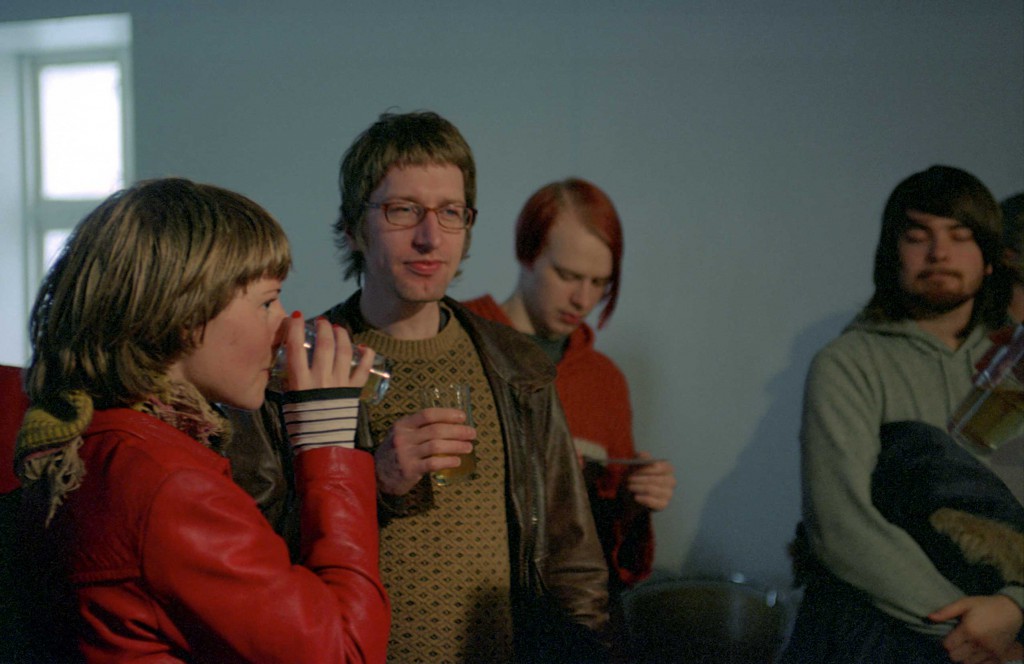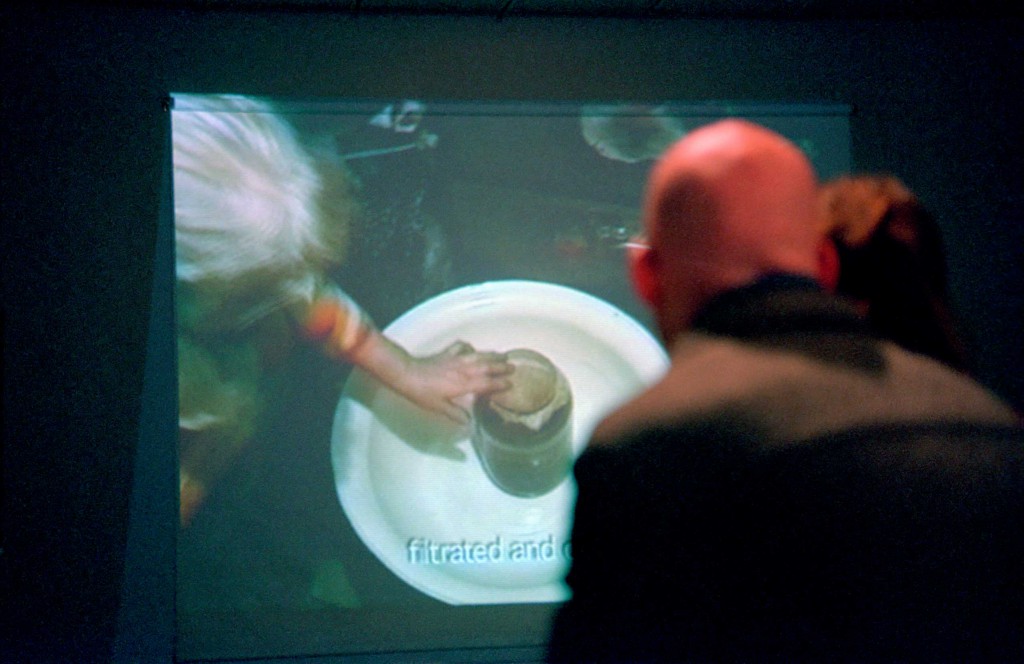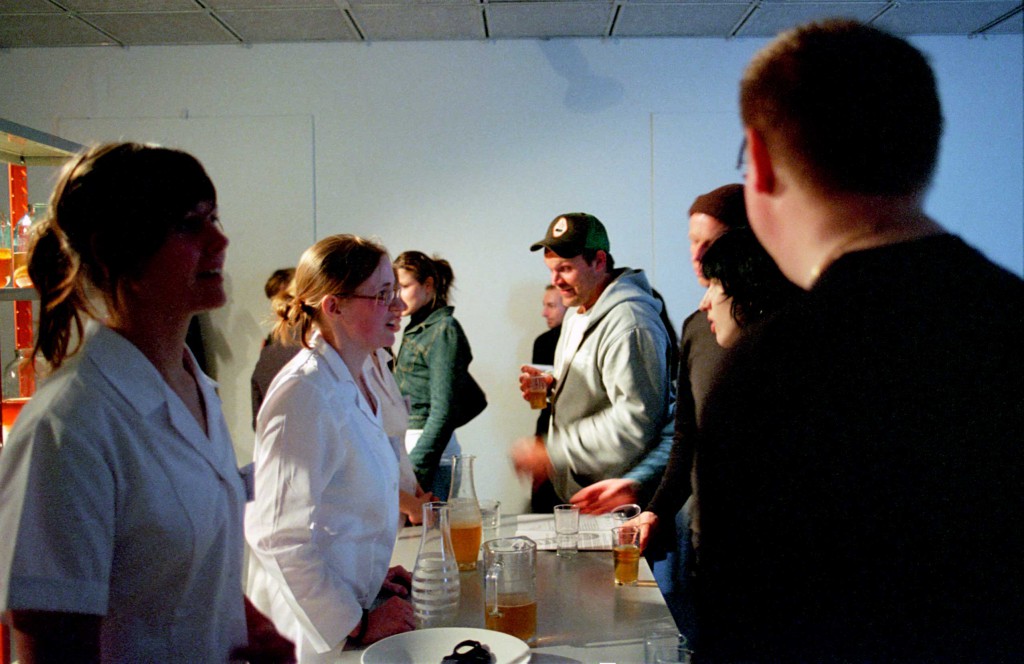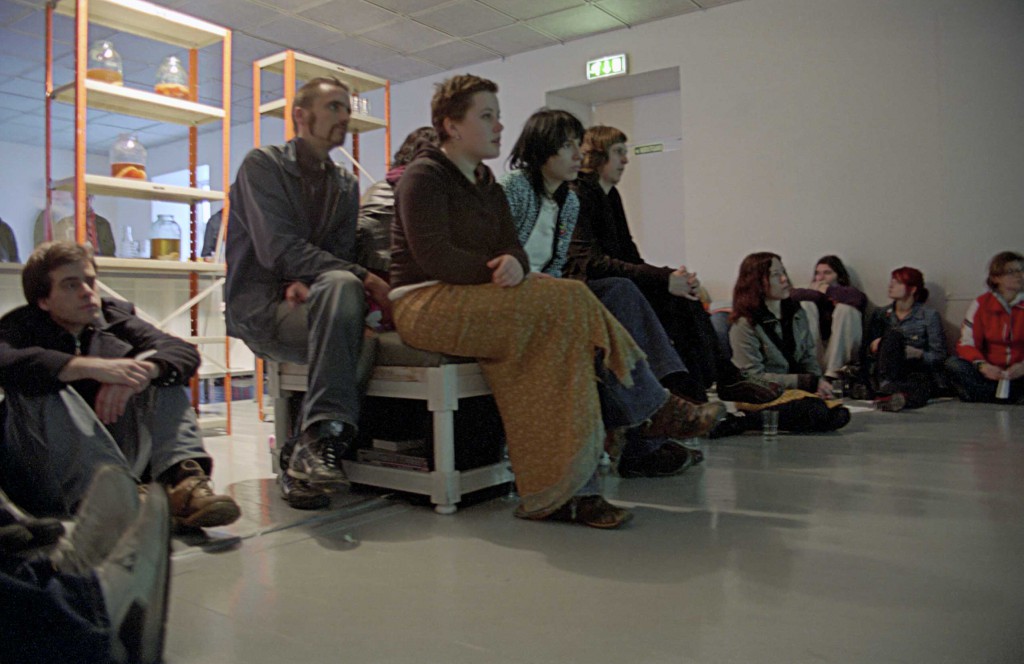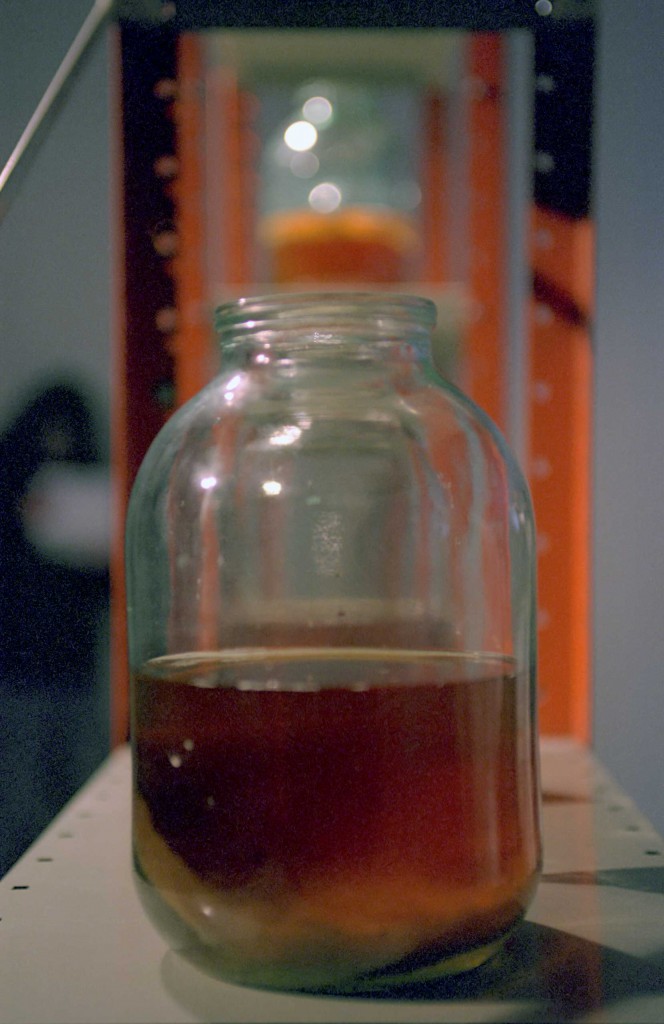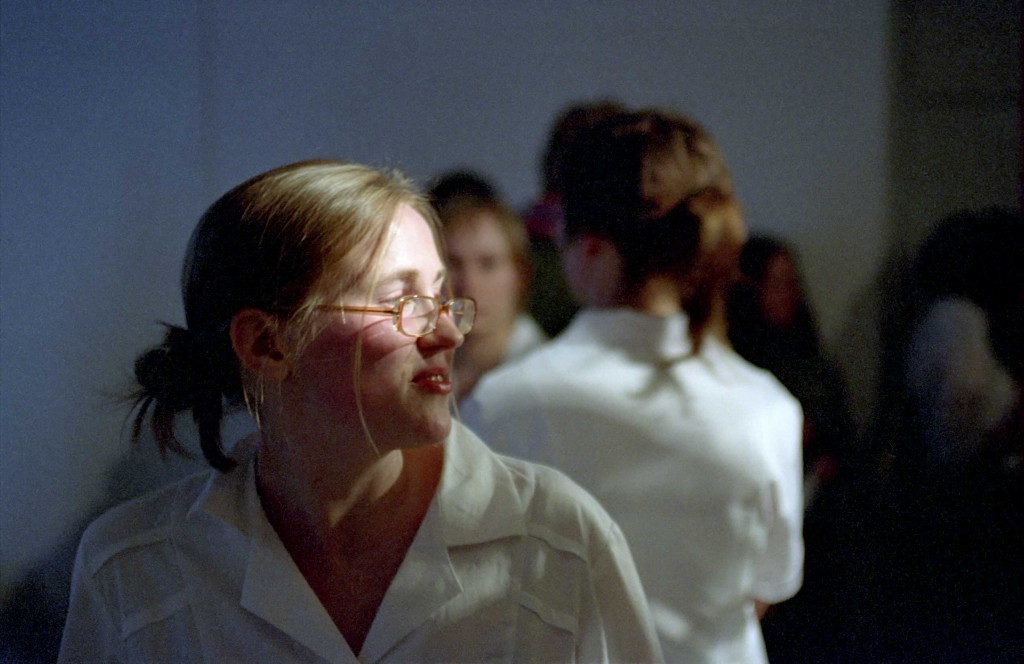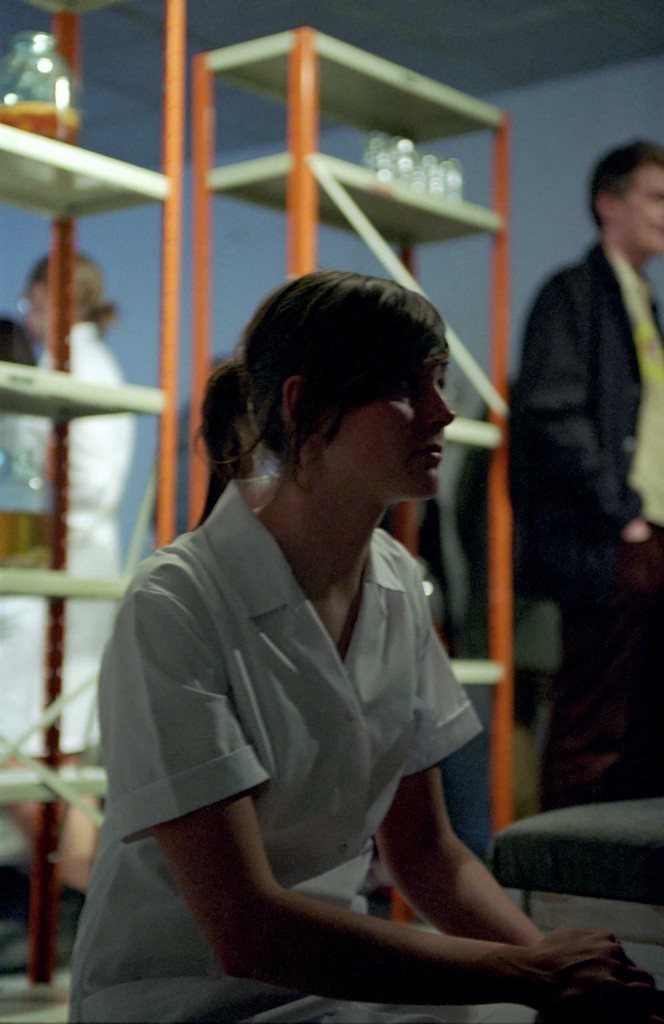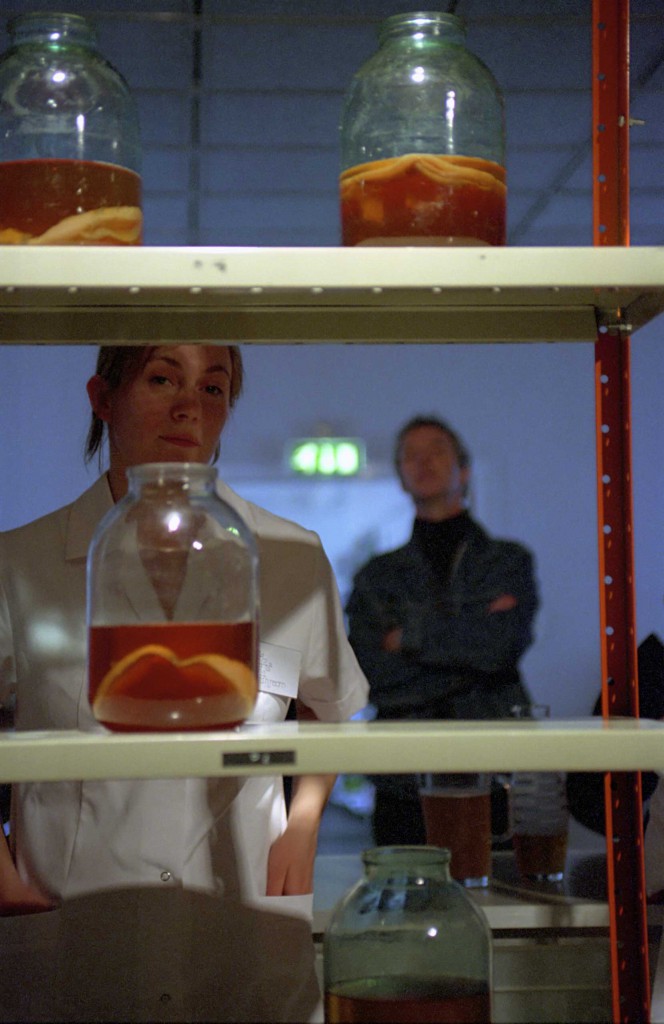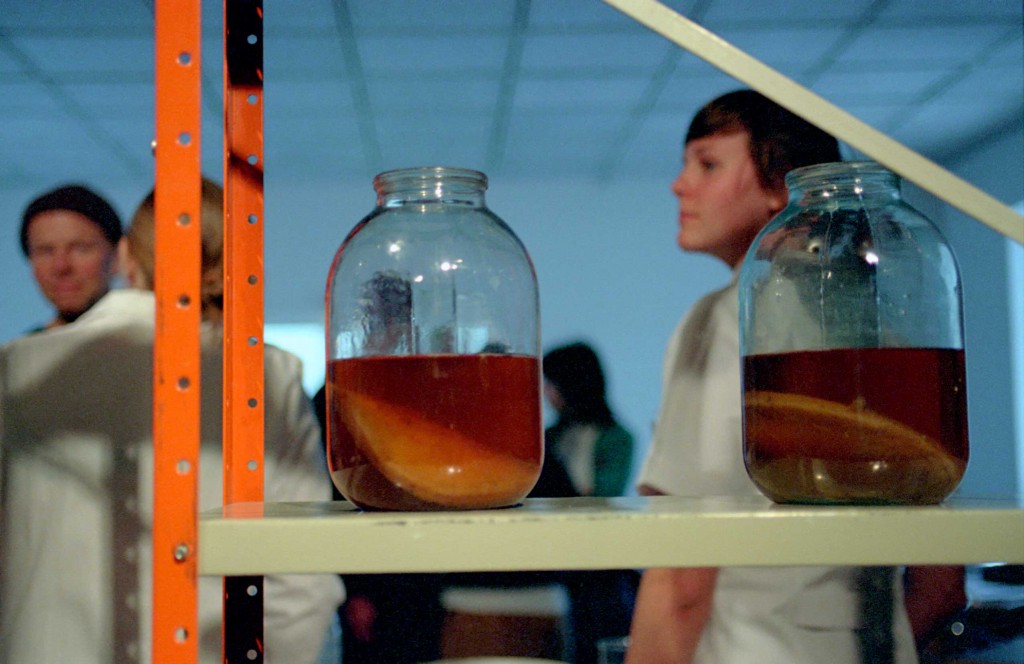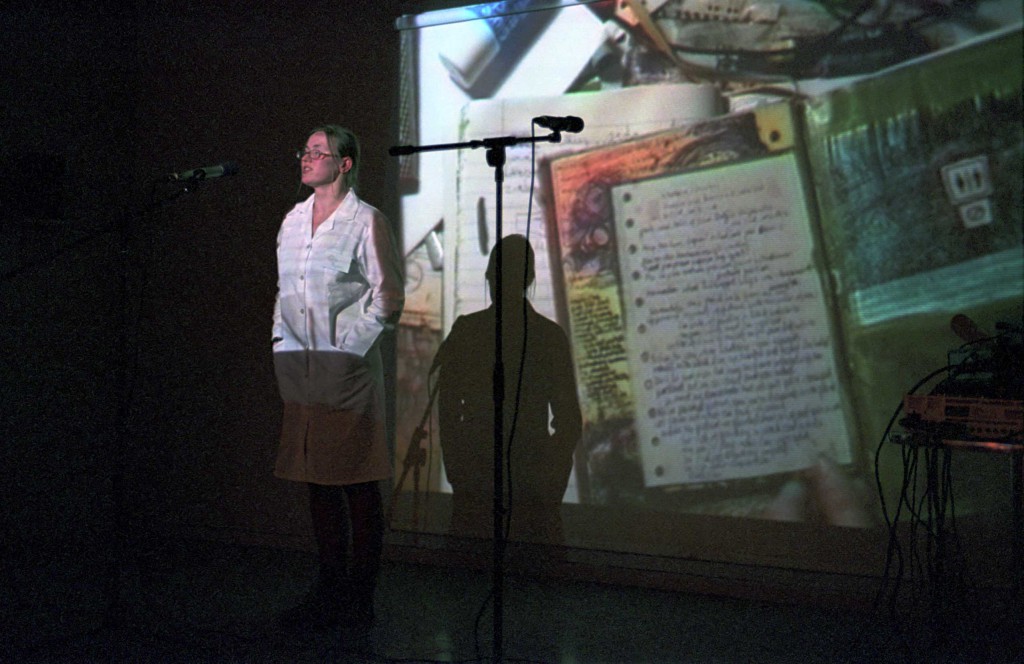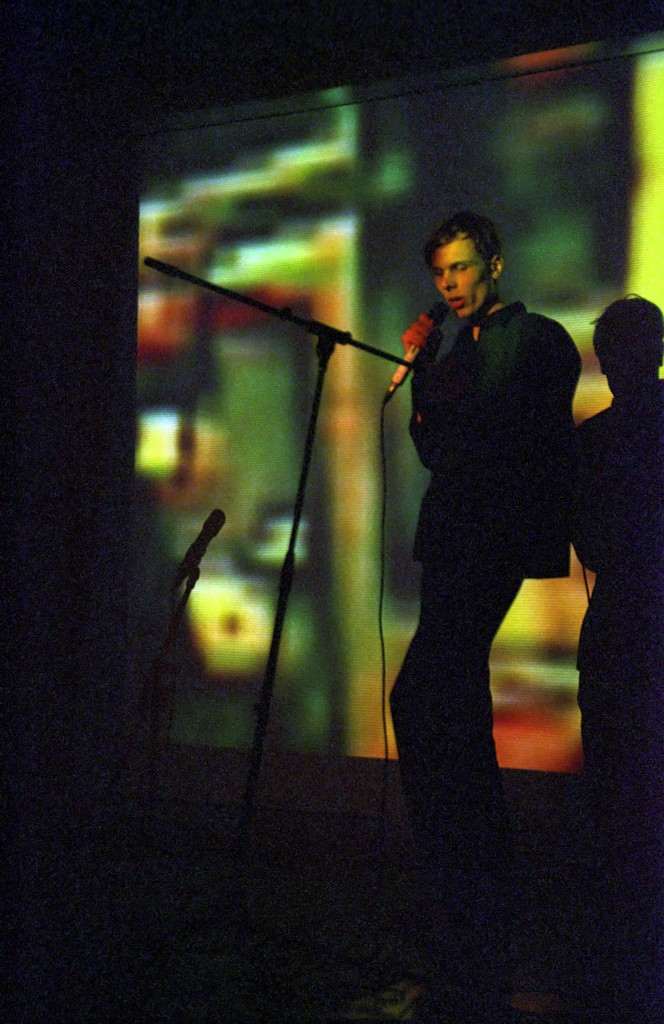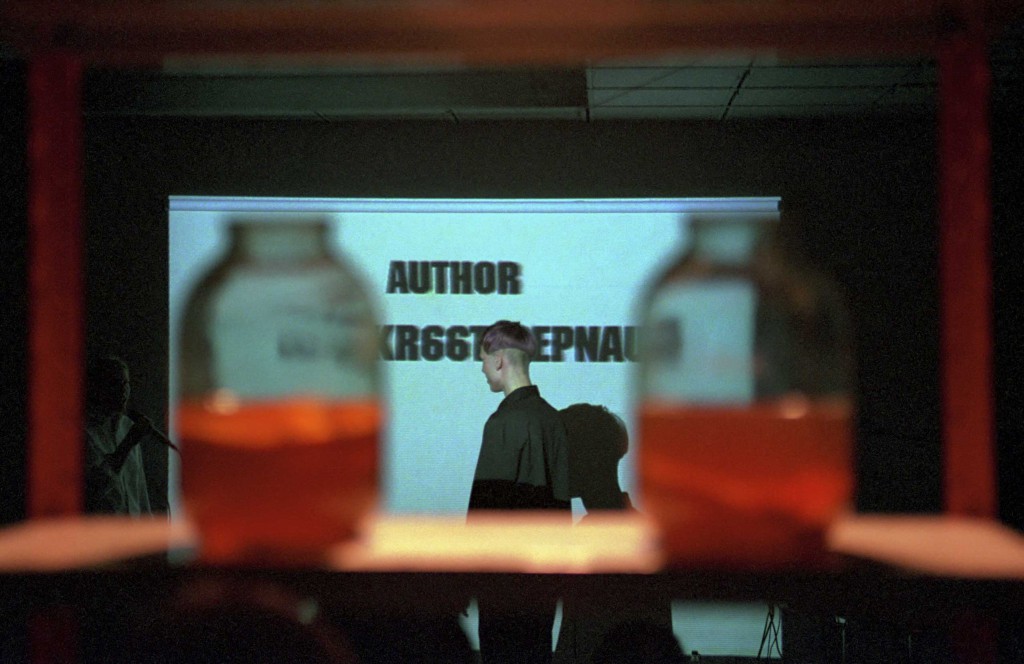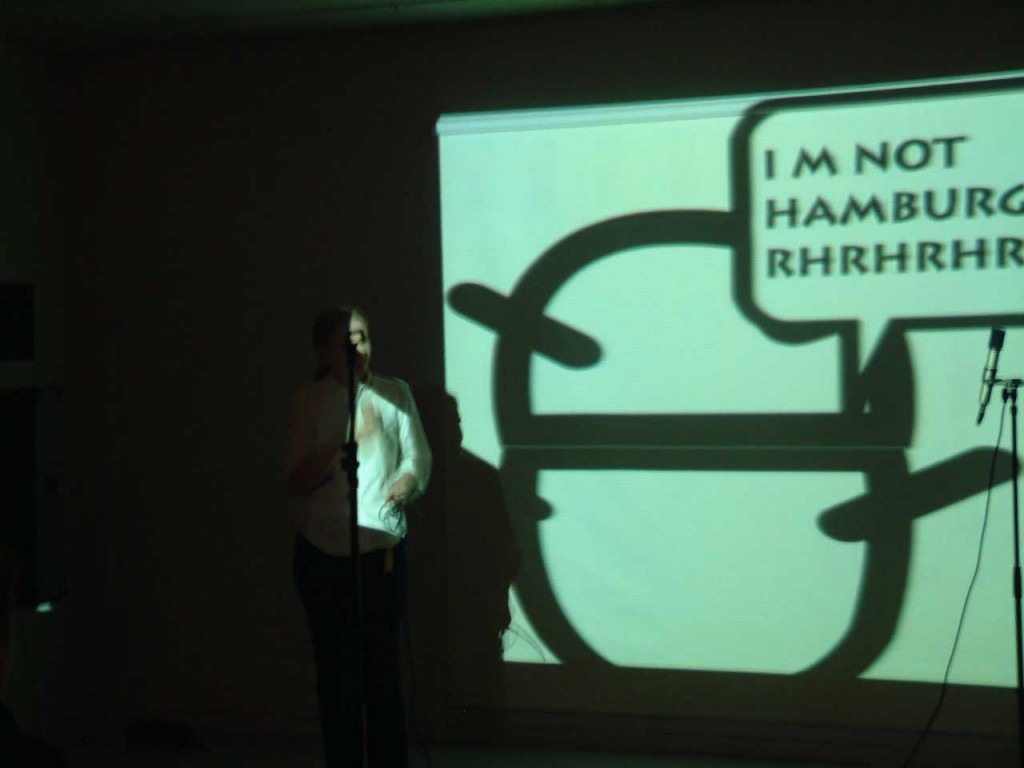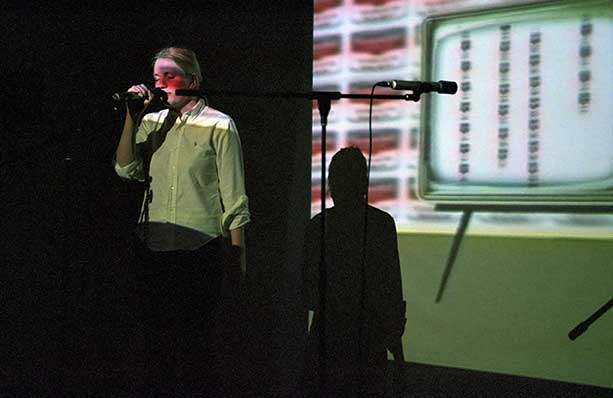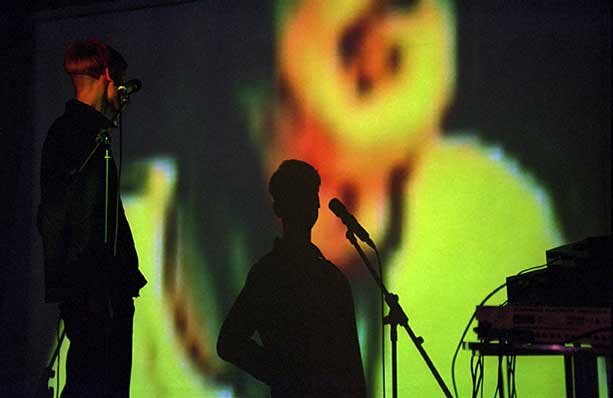Together with curator Karin Lansoo, Rakett brought parts of the T-shroom project to Bergen. The one-evening presentation consisted of a T-shroom tasting bar where Rakett and Karin Lansoo were informing the visitors on the nutritious effects from the drink. The evening was accompanied with screening of the documentary The Tea Mushroom and live concert by BAP.
T-shroom is originally a project that had several arms and legs, the multimedia project: Tea Mushroom Shop in Riga, the tea mushroom’s advertisement campaign in conjunction to this shop and the development of a Tea Mushroom Growers’ Association circular.
T-Shroom
Reduces stress and asthma, head aches and migraine, acne and stomach ache, increases your potency and strengthens your immune system (!) and much, much more!
Studies show that 20 years ago this tea mushroom could be found in one of three Soviet kitchens. This octopus-like jelly lump produced years of soft drink consumption for the whole family. The tea mushroom was either inherited as a valued object down through the generations, or given as a gift amongst friends. This way the tea mushroom received a status as ordinary pets in the family hierarchy.
Of special importance was that the mushroom was impossible to buy in the stores. All shops were in this period owned by the state, which at that time was in control of the distribution of foods and drinking products. The tea mushroom gave consumers alternative goods, which at that time could be seen as a statement towards the system of power.
With political changes and market liberalism, an invasion of global soft drinks products have taken place, and this has changed the status of the tea mushroom from the position of a respected family member to an outsider.
Monday April 26, 2004, the Bergen public was given a chance to get more information, consume the drink, watch the film The Tea Mushroom and enjoy Estonian electronica concert with Ott Kaguvere & Lilli-Krööt Repnau, both from the band BAP from Tallinn, Estonia.
With its healing properties, T-shroom has the following effects:
Prevents constipation
Relieves pain from arthritis, rheumatism and gout.
Purges the gall bladder and large intestine
Improves digestion and prevents stomach cramps
Helps stop non-bacterial diarrhea
Helps against bronchitis and asthma
Reduces stress and insomnia
Improves eyesight
Helps against headaches and migraine
Reduces alcoholics craving for alcohol
Cleanses problematic facial skin
Improves hair growth and strengthens nails
Strengthens the body, increases energy
Improves potency and sexual energy
Inherent essential antiseptic properties
Improves the immune system by making it more resistant to bacteria and viruses
More about the film:
The Tea Mushroom, by Katrina Neiburga
2001, 20 mins, part of the multi-media project the Tea Mushroom Shop and campaign in Riga.
‘Whilst I was studying at the Royal Swedish Academy of Arts, a like-minded colleague Peteris Kimelis and I decided to find people who still grew tea mushrooms. My memories of growing tea mushrooms were foggy – in my early childhood, on a table in the kitchen stood a three-litre glass jar with a strange, see-through pancake that floated in brown water. In spite of its appearance, it was a drink that was far superior to all the Coca-colas and Fantas of today. We placed a notice in the newspaper, stating that we were looking for people who still used and grew the tea mushroom. In the end, the project became a notable advertising campaign for the good old tea mushroom – it was in the press, on television and on the radio. The brand was created by the designer Kirils Kirasirovs, the text was written by curator Kaspars Vanags, the Tea Mushroom Association of Latvia’s honorary member Lana Danilevica, grew approximately seventy new tea mushrooms. A documentary film was made about tea mushroom growers that was screened in a specially organised Tea Mushroom Shop that was set up right in the centre of Riga, where any passer-by could get a free baby tea mushroom in a test tube.’
Accommodation kindly supported by National Academy of Fine Arts, Bergen
See the film
The presentation was in the framework of Mandag hele året by Veronica Diesen.
From the handouts:
T-shroom
Do you know much of mushrooms? Not only the magic ones, or the fungous stuff between your toes. Do you know of the nostalgia of mushrooms collected in a hand-basket for their “cut-off” homeland – the mycelium – a multi-cell root-like network spawned underground, sometimes for thousands of square kilometres?
And have you happened to hear stories of social mycelia?
Though the term might taste of a trendy theory from the likes of network society, fractals, selfish gene or idea virus, it’s a real thing! Sounds just like coca-cola’s ex-selling-line, and not by coincidence. It’s about a symbiotic colony of acetic acid bacteria and yeast fungi, colloquially called tea mushroom or t-shroom.
Certain studies indicate that even some twenty years back, tea mushroom was found in one out of three kitchens in that time’s soviet union. The jellyfish-like creature used to inhabit three-litre jar and ensured a year-round supply of homemade beverage. T-shroom usually was either passed from one generation to the next as a family heritage or it was acquired as a gift from friends. Therefore it took up a place in the household hierarchy equivalent to a family member’s or a pet’s.
Particularly important is the fact that tea-mushroom could not be bought in any shop. All shops without exception in those times were state-owned, thus ensuring the regime’s control over the choice and distribution channels of commodities. Thus we can state that the autonomy of the tea-mushroom growers network encouraged consumption habits alternative to the system of power.
Political changes and market liberalization have rendered the t-shroom’s outsider status even more visible, as invasion of the global brands of soft-drink companies has demoted it from the position of a respected family member to that of a minority. However, there still remain babushkas who are keen to integrate tea-mushroom into the everyday of their grandchildren, at times with subversive shrewdness calling it a “biological tamogochi”.
The attendant colonies of t-shroom have been transported illegally over the borders to preserve the population from extinction. They should be considered refugees who hope to be adopted at friendly homes or supported with donations of sugar and tea.
In their turn, every supporter who has become a symbiosis partner may be considered a cell in a specific social mycelium. Join the network of activists in the zone of mushroom-based autonomy!
Simply put, this is a well-meant offer to become a mushroom…
